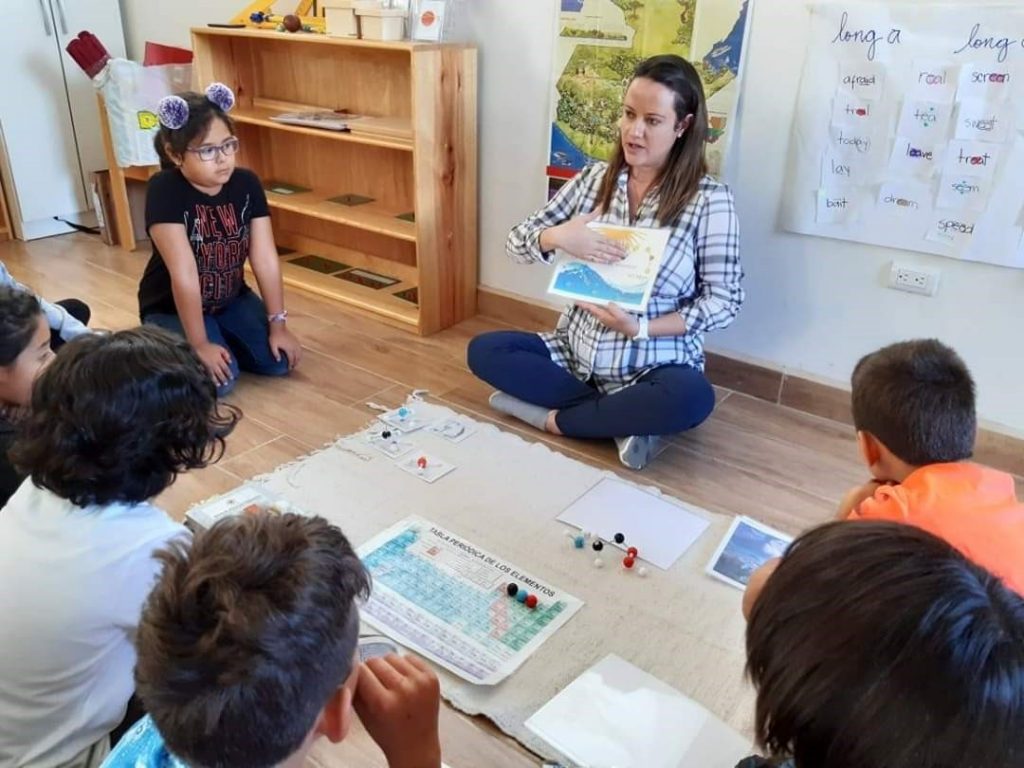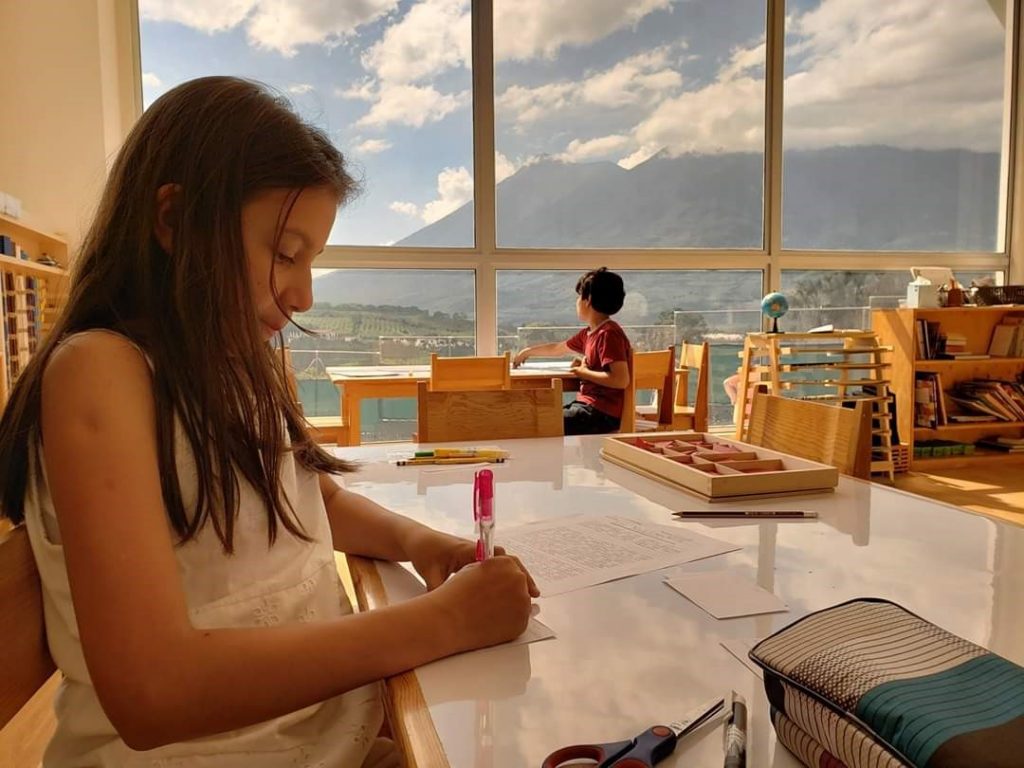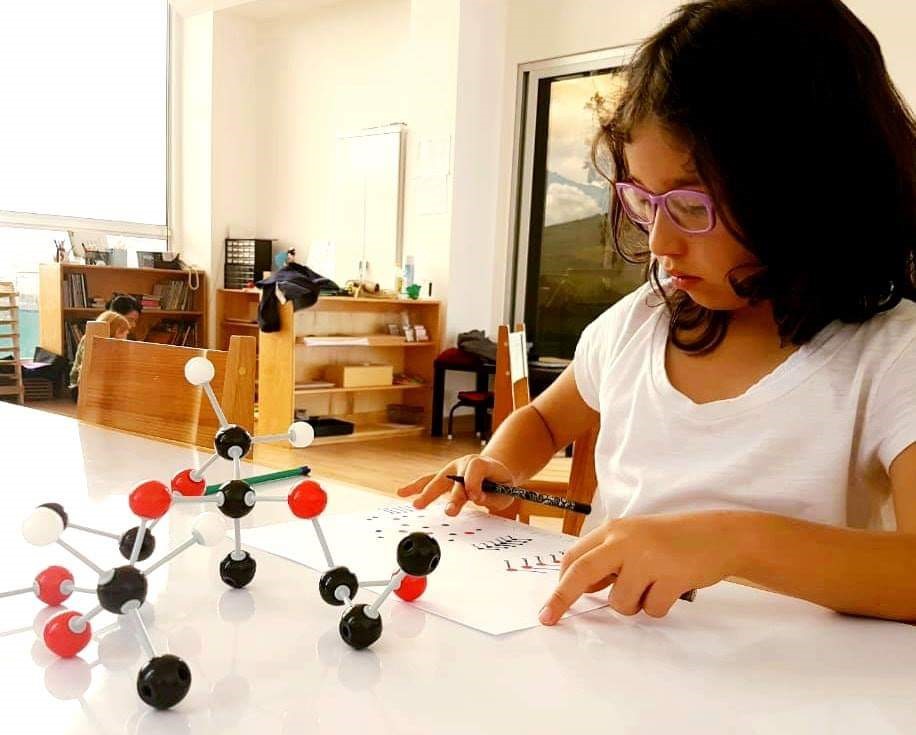Dear Ask a Montessorian, help! I feel overwhelmed with teaching elementary science. I don’t have a science background. There is so much preparation with scientific knowledge, finding the materials, setting up, creating lessons; buying the Montessori 3 or 5 part cards, and coming up with a creative follow-up activity to excite and inspire the children! How do I do it all AND everything else?
Great question! There are a few simple tips that anyone can do in order to address this. It’s not so much about the factual scientific knowledge, but it’s about the right mindset, approach and resources.
You’re Not Alone.If I had to guess, I would say that all educators have felt at one time or another or currently feel this way when it comes to a subject area they’re unfamiliar or uncomfortable with. First thing to do, as you’re reading this right now, is to let go all the misconceptions that YOU need to know every subject as well as an expert at a moment’s notice. I truly admire the Montessori way of teaching in that we’re not expected to be all-knowing. Just as we tell children, we all have strengths in different places and at different times of our lives. It is much more important to model how to seek out knowledge and that you are also constantly learning. When we haven’t developed the skill or knowledge in a particular topic, we can seek resources that will help. This will guide and help us nurture this knowledge. Our constant goal is to inspire and encourage children to learn more.
Montessori Manuals: In the subjects of science, I would first recommend looking at your Montessori manuals for guidance for specific lesson plans and a scope and sequence. This is a great place to guide you to why and how to start. If you don’t have a set, I would contact different training centers or research different online options. Amazingly, the children can be a great resource as well. Science is such a fascinating topic that draws the attention of many children, so don’t underestimate their knowledge and exposure. They may have learned from books, the internet, movies, television shows, and personal experiences at zoos, parks and home activities. The wonderful thing with science is that we are constantly adding to the knowledge. Science is always dynamic, evolving and revealing new discoveries. It keeps people guessing and perpetually learning something new.
Observe, Assess and Reflect.When working with children, make sure to observe and assess them (and yourself) when teaching science. Think about questions such as: What topics have I already exposed them to? What are their interests? When you give a science lesson, are they bouncing in their seats with excitement? How do you feel about the topic? Are you full of amazement and wonder, or are you bored, uninterested and apprehensive? Does this reflect back onto your presentation? One of the biggest ways to get children excited about learning something is for you to be excited about the possibilities. You’ve probably heard this before, but this really applies if you’re uncomfortable about teaching science. If you’re feeling inadequate, turn it around and learn with the children. Continue to verbalize several, “I wonder….” statements and questions. When you discover why and how something works, get excited and be amazed about the incredible world around you! I have a strong background in science, but I’m constantly amazed by the remarkable things happening naturally all around us on our planet naturally. To be comfortable teaching science starts with having a positive mindset.
Seek Outside Resources.Here comes the tricky part. What if your albums don’t support the needs and interests of your classroom or students? What if you want to enhance your science area with additional lessons, or you just feel you need extra support? This is when you will need to seek help from other resources. Once again, this is NOT a bad thing. This does not mean you’re inadequate. Honestly, this means you care enough to want the best for your students, that you know yourself, and that you are modeling that collaboration will always produce the best product. Here are some ideas for outside resources:
- First, start in your community. Reach out to your parents in your classroom, friends or family members to see if they have a special interest or skill in science that they could share. Give them an outline of topics or subject areas and see if anyone can be a guest speaker.
- Look at museums, zoos, educational and nature centers for classes, exhibits, and kits you can rent or borrow. Often they have free or inexpensive lesson plans or resources. You can schedule a field trip where a docent can give a tour or teach a workshop.
- Look for overnight environmental camps or organizations. These are excellent ways to jump start and develop your science program for the year.
- Look for supplemental curricula or science curriculum memberships online. These curricula resources often include the lesson plan, presentation materials, and support. Look for groups that have ways to keep you accountable or provide a community to support you to answer questions and keep you on track throughout the year.
Overall, I want you to realize and understand… you are not alone, and there are resources to support you. Using science to connect and integrate curricula is easy and beneficial. Children feel grounded and naturally gravitate towards scientific inquiry. Don’t forget, anyone can be a scientist. I’ll leave you with a quote from Dr. Montessori, “What is a scientist?… We give the name scientist to the type of man who has felt experiment to be a means guiding him to search out the deep truth of life, to lift a veil from its fascinating secrets, and… has felt arising within him a love for the mysteries of nature.” We can all be scientists if you allow yourself to seek knowledge and enjoy the wonders of science.
Jackie Grundberg is the owner of Backpack Sciences membership. She helps elementary educators overcome overwhelm by providing 4 ready-to-go science lesson plans each month. Each lesson follows an inquiry, Montessori-based philosophy. She is AMS 6-12 credentialed with over 20 years of teaching experience. Backpack Sciences combines her former work as a wildlife biologist and Montessori knowledge to help educators implement more science into the classroom yet saving them 100’s of prep hours and giving back members evening and weekends. She also works for the Center for Guided Montessori Studies (CGMS) as an elementary instructional guide, field consultant and practicum guide. Check out her Free Facebook group for tips, advice and help, https://www.facebook.com/groups/Backpacksciences/



















